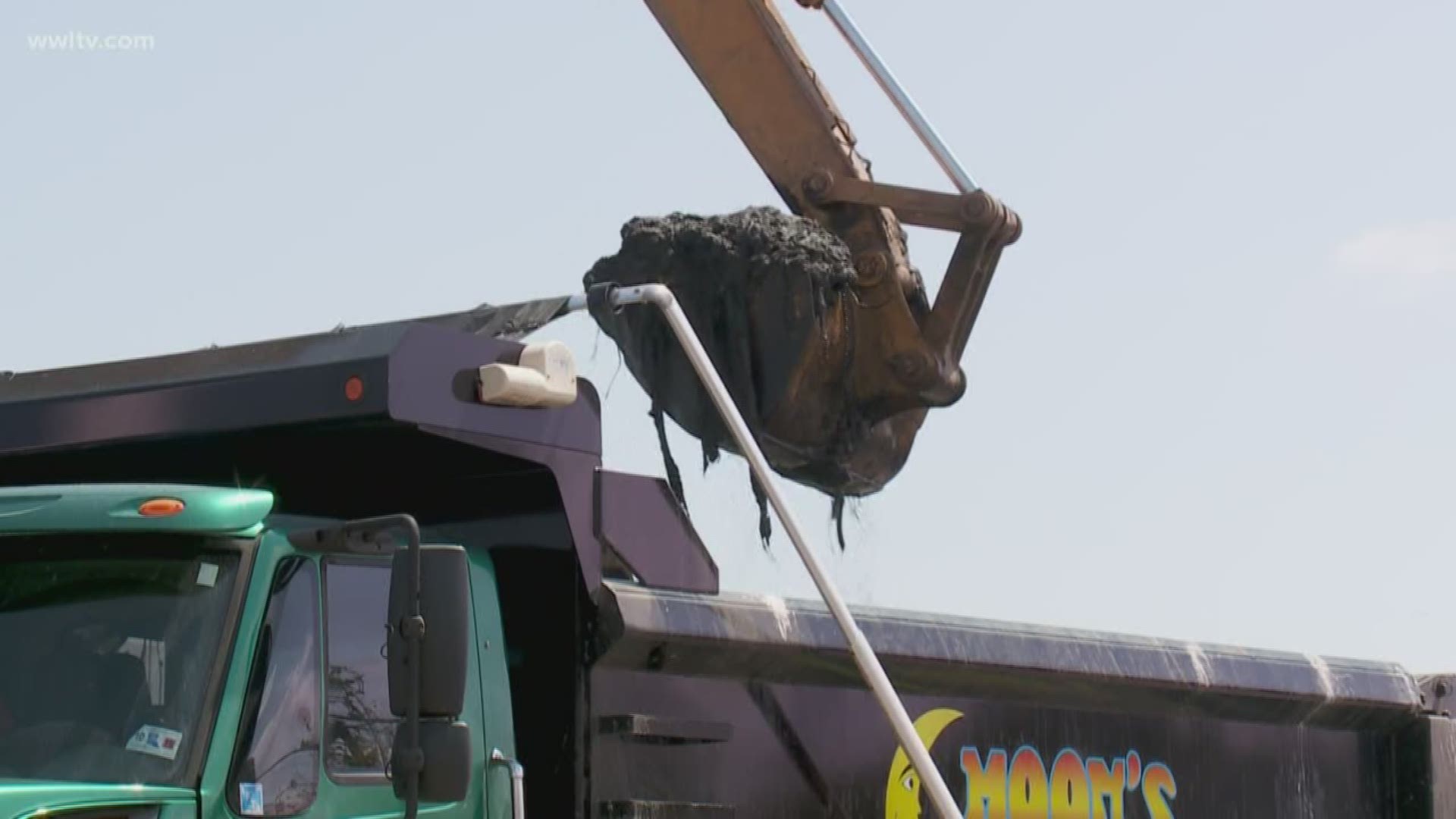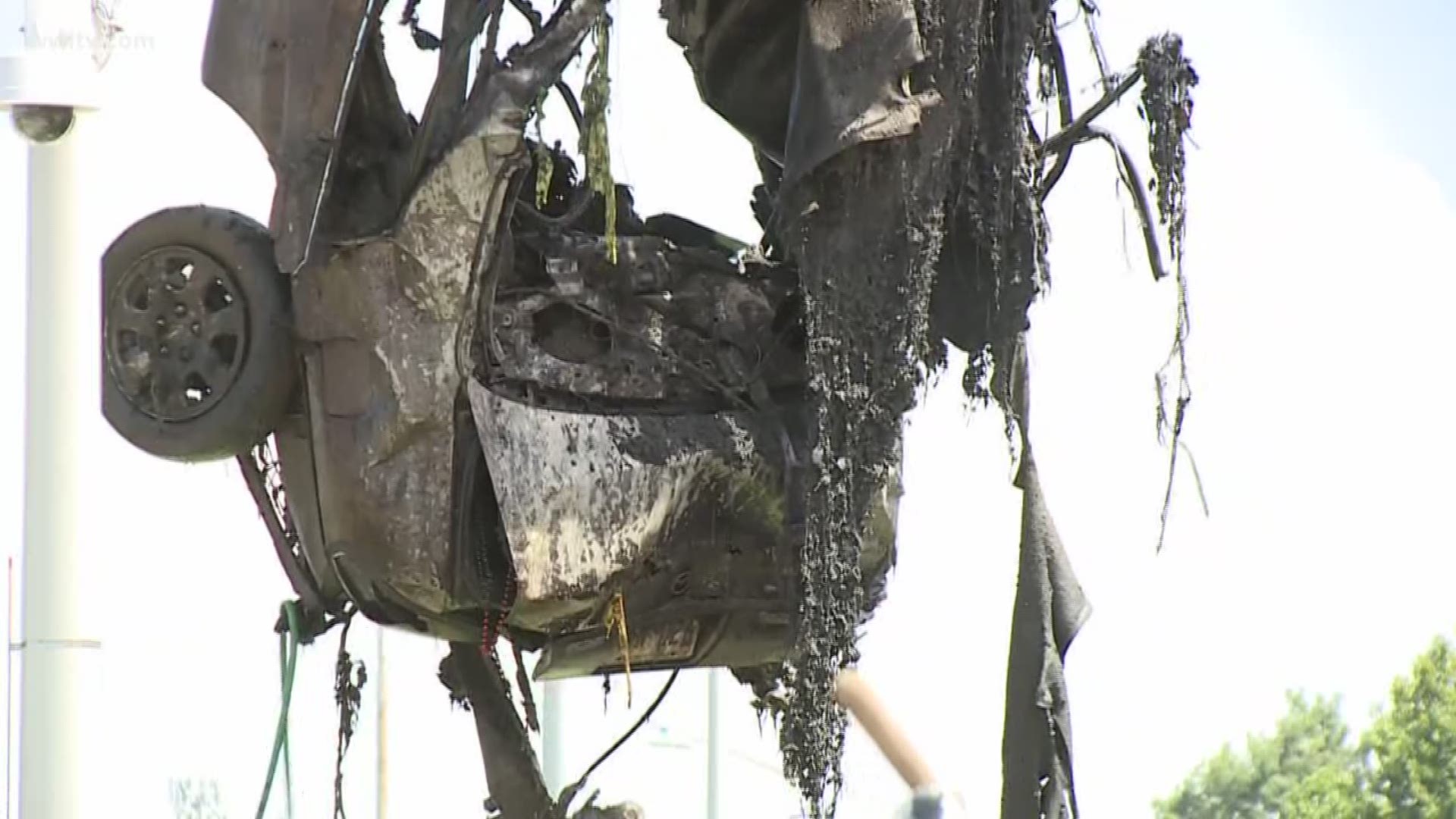NEW ORLEANS — After pulling a car out of the underground Lafitte drainage canal last week, New Orleans Sewerage & Water Board contractors were back at the site Wednesday, pulling out more debris, including the wreckage of another vehicle.
Those vehicles made up just a small part of the 370 tons of debris that have been pulled from a nearly three-mile stretch of the canal since contractors began working last week. The city calculated that the debris covered 22,000 cubic yards.
“What I started seeing this morning, it's like a “wow” factor,” Mayor LaToya Cantrell said. “But the fact of the matter is these things really are clogging our drains.”
Cantrell and other city officials are using a full-court press to pinpoint the reasons behind persistent street flooding that is damaging cars, inundating homes and businesses and frustrating residents.
The perpetual search for root causes took on added urgency after a sudden rainstorm Monday afternoon left many parts of the city underwater during rush hour, flooding cars, homes and businesses.
One of the city’s biggest concerns is the degree of flooding seen in areas that usually drain quickly.
“We are seeing flood events that are jarring to folks in areas that are a little bit new. So it's a lot of investigation but it's also doing at the same time which is what you saw at the canal.
The city’s public works department is working with the Sewerage & Water Board and U.S. Army Corps of Engineers to assess everything, including major canals, hundreds of miles of underground pipes and the city’s 72,000 catch basins. The recently opened SELA box culverts that carry massive amounts of water under several Uptown streets is another major focus.
“It's very complicated, it really is, and we are looking at every aspect as it relates to infrastructure,” Cantrell said.
Cantrell said that while she inherited major infrastructure problems, she did not inherit a big-picture analysis of how all the elements of the drainage system – especially the newer features such as the SELA culverts – work together, something that is now a top priority.
“What is very clear, this level of analysis and assessment, they have not been done,” Cantrell said. “It's been a very long time, but I'm just proud that we have the team in place.


